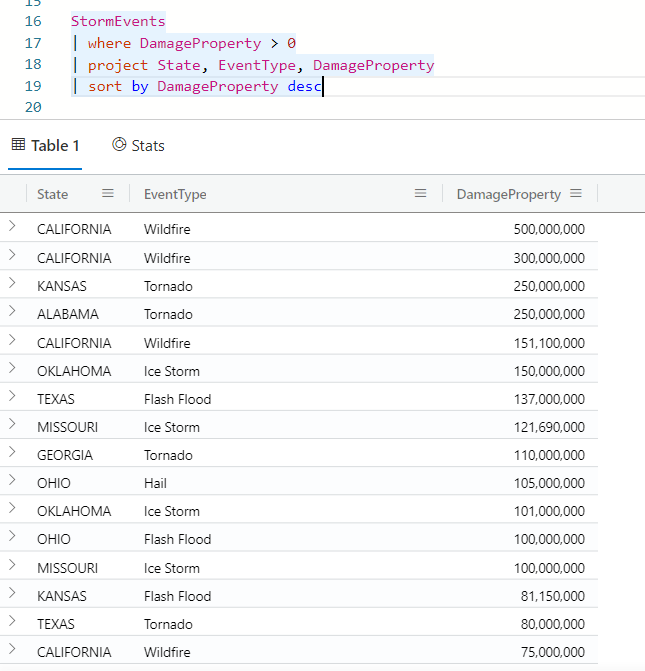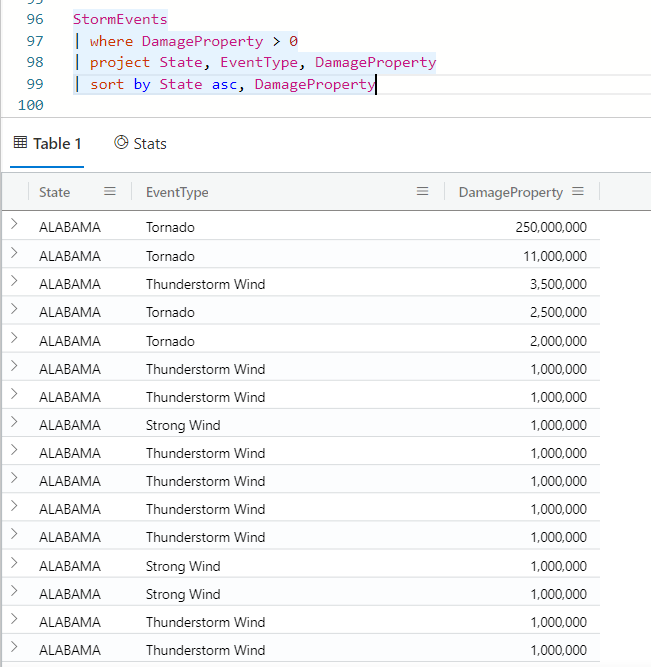Exercise - Reorder returned data by using the sort operator
Recall that in the storm events example, you've narrowed down events by time range, keywords, and values in a particular column. Now you want to organize these results to see the most damaging storm events first.
Use the sort operator
It's difficult to make sense of unordered data. Let's make it a bit easier to understand by organizing the order in which the results are presented. You want to know which events caused the highest damage to property, so you'll order the results by the field DamageProperty.
Run the following query:
StormEvents | where DamageProperty > 0 | project State, EventType, DamageProperty | sort by DamageProperty descYou should get results that look like the following image:

Notice that the results start from the highest property-damage value and decrease. In fact, the query sorts in descending order by default, so you can leave out the
descand get the same results. The state and event types aren't ordered in any way.
Sort on more than one expression
Each region has unique weather patterns, so now you want to know which events in each state made the most damage. To answer this question, you'll sort first on the state name and then on the damage within each state. The sort operator sorts in descending order by default, so you'll use asc to indicate that you want to sort the state names in ascending order.
Run the following query:
StormEvents | where DamageProperty > 0 | project State, EventType, DamageProperty | sort by State asc, DamagePropertyYou should get results that look like the following image:

Notice that now you've gotten a table with the same rows as the previous query, but sorted in a different order. Here, we first sort by the state name, starting with Alabama. Within results from the state of Alabama, the property-damage values are sorted in descending order.
Use the top operator
Instead of sorting and scanning the top for a certain number of results, you can use the top operator to show a specific number of top results. In fact, the top operator is more performant, so it's the preferred choice when you just want a certain number of top results.
Run the following query:
StormEvents | where State == "FLORIDA" | top 10 by DamageProperty | project State, EventType, DamagePropertyYou should get results that look like the following image:
